Release Date:2022-10-14 10:45:27 Popularity:
GST centrifugal tube automatic screen printing machine manufacturers, for the classification of centrifugal tube, can be based on its material properties for general distinction, so that the centrifugal tube can be distinguished into two major categories of glass centrifugal tube and plastic centrifugal tube. Centrifuge tubes made of plastic can be subdivided into PP, PC, PS, etc. Depending on the needs, manufacturers will choose different plastic materials to produce.
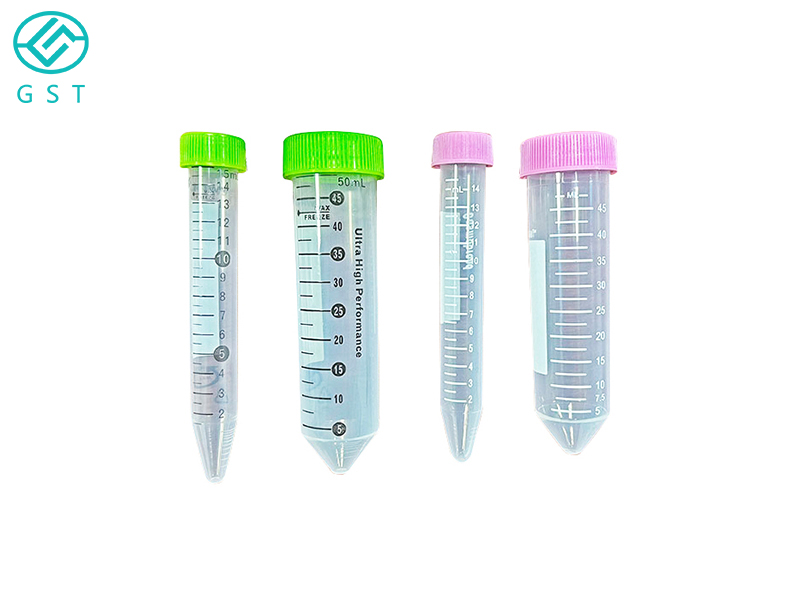
The most familiar and most frequently used consumables in modern laboratories are probably those of tubing, such as centrifuge tubes. Centrifuge tubes, as the name suggests, are mainly used with centrifuges and are an inevitable consumable.
They are classified by material: plastic, glass and stainless steel centrifuge tubes. The common laboratory centrifuge tubes are plastic and glass, generally plastic tubes are used more, because the glass centrifuge tubes can not be used in high-speed or ultra-high-speed centrifuge. Plastic centrifuge tubes are made of PP (polypropylene), PC (polycarbonate), PE (polyethylene), etc. The performance of PP tubes is relatively good. Plastic centrifuge tubes are transparent or semi-transparent, allowing visualization of the sample centrifugation, but they are more easily deformed and less resistant to the corrosiveness of organic solvents, so their service life is shorter. Therefore, laboratories generally often buy centrifuge tubes.
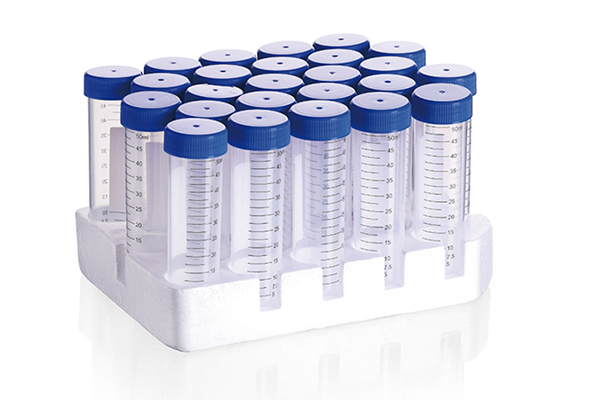
PP (polypropylene): translucent, chemical and temperature stability is better, but at low temperatures will become brittle, so do not centrifuge at 4 ℃ or below.
PC (polycarbonate): better transparency, hardness, can be sterilized at high temperature, but not resistant to strong acids and bases, as well as some organic solvents such as alcohol and so on. Mainly used for ultra-high-speed centrifugation of more than 50,000 rpm.
PE (polyethylene): opaque. And acetone, acetic acid, hydrochloric acid, etc. do not react, more stable, easy to become soft at high temperatures.
PA (polyamide): this material is a polymer of PP and PE material, translucent, chemically very stable, single not high temperature resistance.
PS (polystyrene): transparent, hard, stable to most aqueous solutions, but will be a variety of organic corrosion, mostly used for low-speed centrifugation, and is generally a one-time use.
PF (polyfluorine): translucent, can be used at low temperatures, if the experimental environment under -100 ℃ - 140 ℃, you can use this material centrifuge tube.
CAB (cellulose butyl acetate): transparent, can be used for more dilute acids, bases, salts, and gradient determination of alcohol and sucrose.
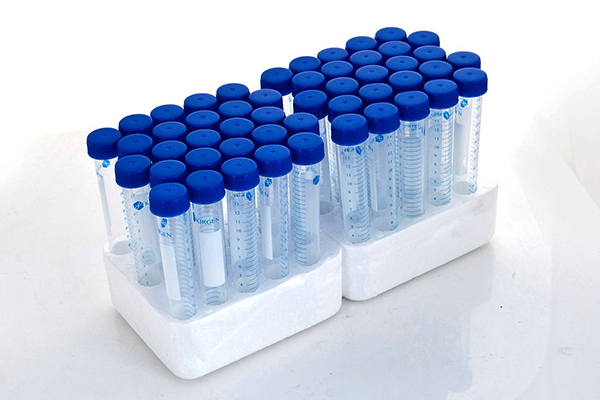
Classification by capacity: microcentrifuge tubes, small-capacity centrifuge tubes and large-capacity centrifuge tubes. Generally called centrifuge tubes with a capacity greater than 100mL as centrifuge bottles. According to the size of the capacity of the centrifuge tube to divide, usually, the capacity of the centrifuge tube is divided into 1.5ml, 2ml, 5ml, 10ml, 15ml, 50ml, etc., according to the online survey to understand, as the current domestic centrifuge tube, usually its main on the above specifications. Among the more commonly used is more 10ml and 50ml.
Large volume centrifuge tubes (500mL, 250mL), also known as centrifuge bottles, are the centrifugal choice for large volume cell harvesting, pelleting and protein purification;
Normal centrifuge tubes (50mL, 15mL), the most common centrifuge tubes used in laboratories;
Microcentrifuge tubes (2mL, 1.5mL, 0.65mL, 0.2mL), often used with microcentrifuges for the separation of micro reagents, often used in molecular biology micro manipulation experiments.
Other specifications are 30ml, 7ml, etc., mainly adapted to different centrifuges.
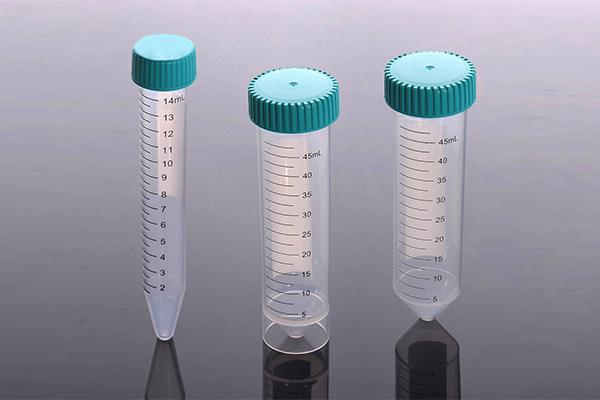
According to the shape of the bottom classification: according to the shape of the tube can also be divided into round bottom and pointed bottom, as well as the screw cap and insert cap. Screw cap centrifuge tubes have a finer scale, while insert cap tubes have only an overall capacity indication.
Round-bottom tubes: When collecting density gradients, choose round-bottom tubes; they have a large bottom area and can withstand greater centrifugal forces than pointed-bottom tubes;
Pointed bottom centrifuge tubes: When collecting precipitation with few samples, the pointed bottom is better for separation and the upper layer is easier to aspirate with a pipette.
Flat-bottom centrifuge tube: the same purpose as the pointed-bottom centrifuge tube, but the tube can stand up, so it is more convenient to put and take in the experiment. Other flat bottom centrifuge tubes are mostly centrifuge bottles and sample tubes.
According to the lid classification: centrifuge tube lid is generally small capacity of centrifuge tubes with lid, while the normal capacity of centrifuge tubes are both with lid, there are also inserted lid and screw cap, 50ml capacity of centrifuge tubes above the basic screw cap is the main. Generally speaking, centrifuge tubes with lids are marked with a scale at the tube wall, while centrifuge tubes with screw caps have a finer scale, and those with insert caps have only a general capacity mark.
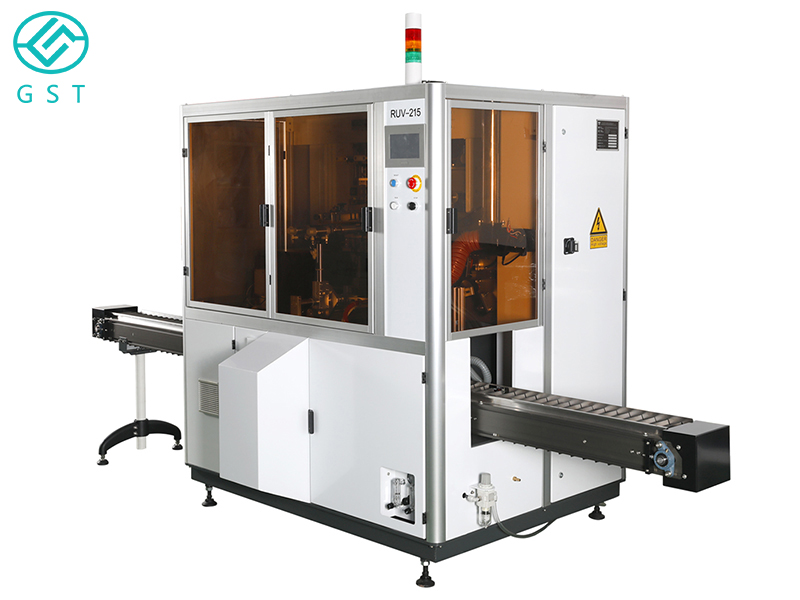
Classification by application: preparative and analytical centrifuge tubes. There is no strict classification standard, but the preparative type is intended for the separation and purification of biochemical substances, cells, and subcellular particles. The analytical type is more demanding.
Classified by speed: low speed centrifuge tubes and high speed centrifuge tubes.